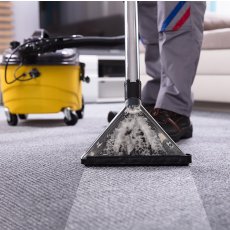What is microblading?
Microblading is a procedure that claims to improve the appearance of your eyebrows.
Sometimes it is also called “feather touch” or “micro-stroking”
Microblading is performed by a trained technician. They may or may not have a special license to perform the procedure, depending on the state in which they are working. This individual carefully draws in your brows using a special tool. The procedure involves hundreds of tiny strokes that build a texture that looks like your own eyebrow hair. Microblading results can last 12-18 months, which is a big part of its appeal.
Microblading cuts into the skin in the area of your eyebrows and implants pigment into the cuts. There are several things you should know about maintenance and aftercare if you are considering getting it done. Your skin will be sensitive afterwards, and you’ll need to avoid touching the area or getting it wet for up to 10 days after your appointment.
Skincare after microblading
Skincare after microblading
Taking care of the area of skin where microblading took place is similar to tattoo care, if a bit more intensive. The pigment immediately following the procedure will appear quite dark, and the skin underneath will be red. About two hours after microblading, you should run a wet cotton swab that has been dipped in sterilized water over the area. This will get rid of any excess dye that’s on your brows. It will also keep the area sterile. It will take anywhere from 7-14 days for the skin to begin to appear healed and for the pigment to fade to its regular shade.
Follow these steps to properly take care of your skin after microblading:
- Avoid getting the area wet for up to 10 days, which includes keeping your face dry during a shower.
- Don’t wear makeup for at least a week. This is because the pigments are still settling in to the shallow cuts in your skin caused by the blading.
- Don’t pick at scabs, tug, or itch the eyebrow area.
- Avoid saunas, swimming, and excessive sweating until the area is completely healed and you have a follow-up appointment.
- Keep your hair away from your brow line.
- Apply any medicated cream or healing balm provided by your technician as directed.
Maintenance tips
Maintenance tips
Most technicians recommend getting a “touch-up” of your microbladed eyebrows at least once a year. This touch-up will involve adding pigment to the outline of the brows that you have already.
After your skin is fully healed, you’ll want to protect your microblading investment by taking care of your skin. Applying a sunscreen to the microbladed area may help prevent fading. Like similar cosmetic treatments — such as eyebrow tattooing — microblading is permanent but will fade. Fading may occur at a faster rate than brow tattooing due to the smaller amount of pigment used. Two years after your initial procedure, you’ll most likely have to repeat the procedure in its entirety.
Potential complications
Potential complications
Infections of the skin due to irritation or allergic reaction from the pigment is a possible complication of microblading.
It’s normal to have some pain and discomfort during the procedure, and you might feel a slight residual stinging afterward. It’s not normal to have severe pain in the affected area once you leave your technician’s office. You should pay careful attention to the microbladed area to see if it becomes puffy or raised. Any sign of a yellow-tinged discharge or excessive redness could be a sign of the beginning of an infection.
If the area swells, continues to scab after two weeks, or begins leaking pus, you should go to the doctor immediately. An infection in the eyebrow area is especially concerning if it reaches your bloodstream, because the area is so close to your eyes and brain. You will need prompt treatment with antibiotics if you get an infection from microblading.
People that are pregnant, prone to keloids, or have had an organ transplant should avoid microblading altogether. You should also be cautious if you have a compromised liver or a viral condition such as hepatitis.
The most important thing you can do to prevent a microblading infection is to research your technician. Not every state requires the technician have a license. You should ask if they are licensed and to view the license. If they aren’t licensed, request to see their occupational license or inspection from the health department. The presence of any of these makes them more likely to be a legitimate provider.
The tool used for the microblading procedure should always be a one-time use, disposable instrument. If you don’t see your microblading technician open a new one when it’s time for your appointment, feel free to stand up and leave!
While microblading is generally considered to be as safe as other forms of tattooing, there is little medical research or clinical studies to back this up.
+1 727-577-3558
This email address is being protected from spambots. You need JavaScript enabled to view it.








 Vectora Design
Vectora Design